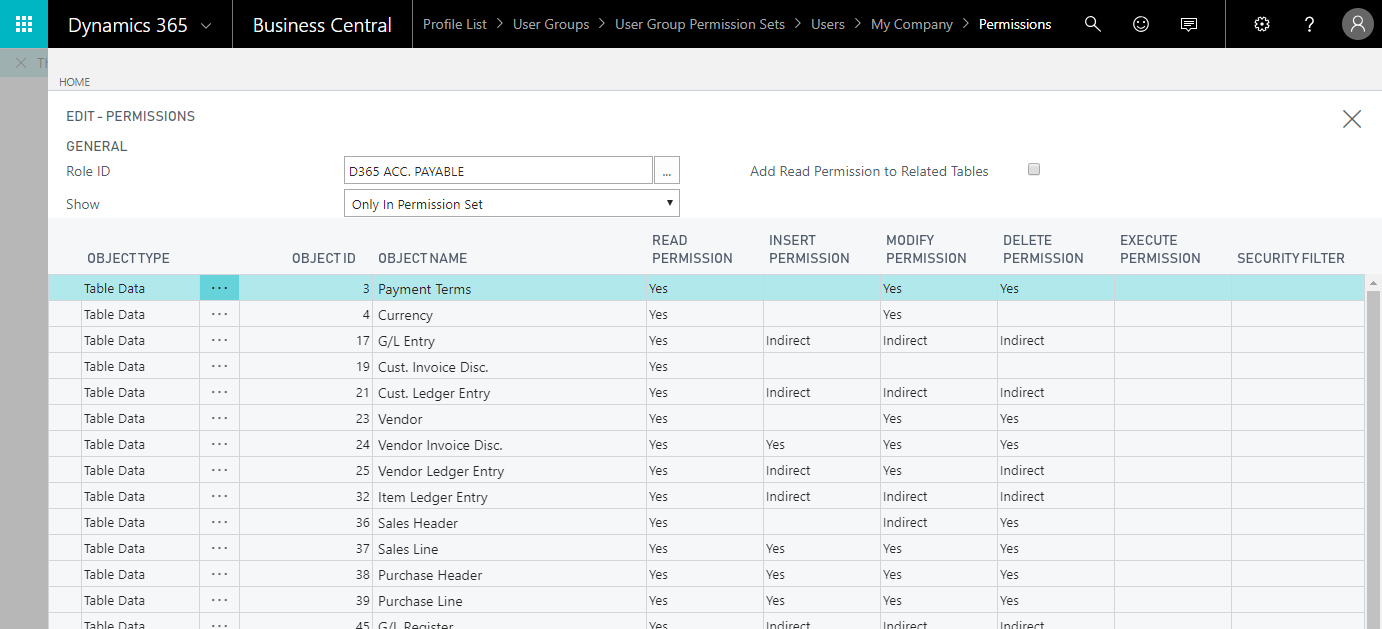There is a distinction between the table (data definition and data container) and the data (the contents of a table). The table definition describes the identification information, data structure, validation rules, storage, and retrieval of the data that is stored in the table (container). This definition is defined by its design and can only be changed by a developer. The data is the variable content that originates from user activities. The place where we can see the data being explicitly referenced, independent of the table as a definition of structure, is in the permissions setup data. In the following screenshot, the data is formally referred to as Table Data:

The table is not the data—it is the definition of data contained in the table. Even so, we commonly refer to both the data and the table as if they were one and the same. That is what we will do in this book.
All permanent data must be stored in a table. All tables are defined by the developer...


